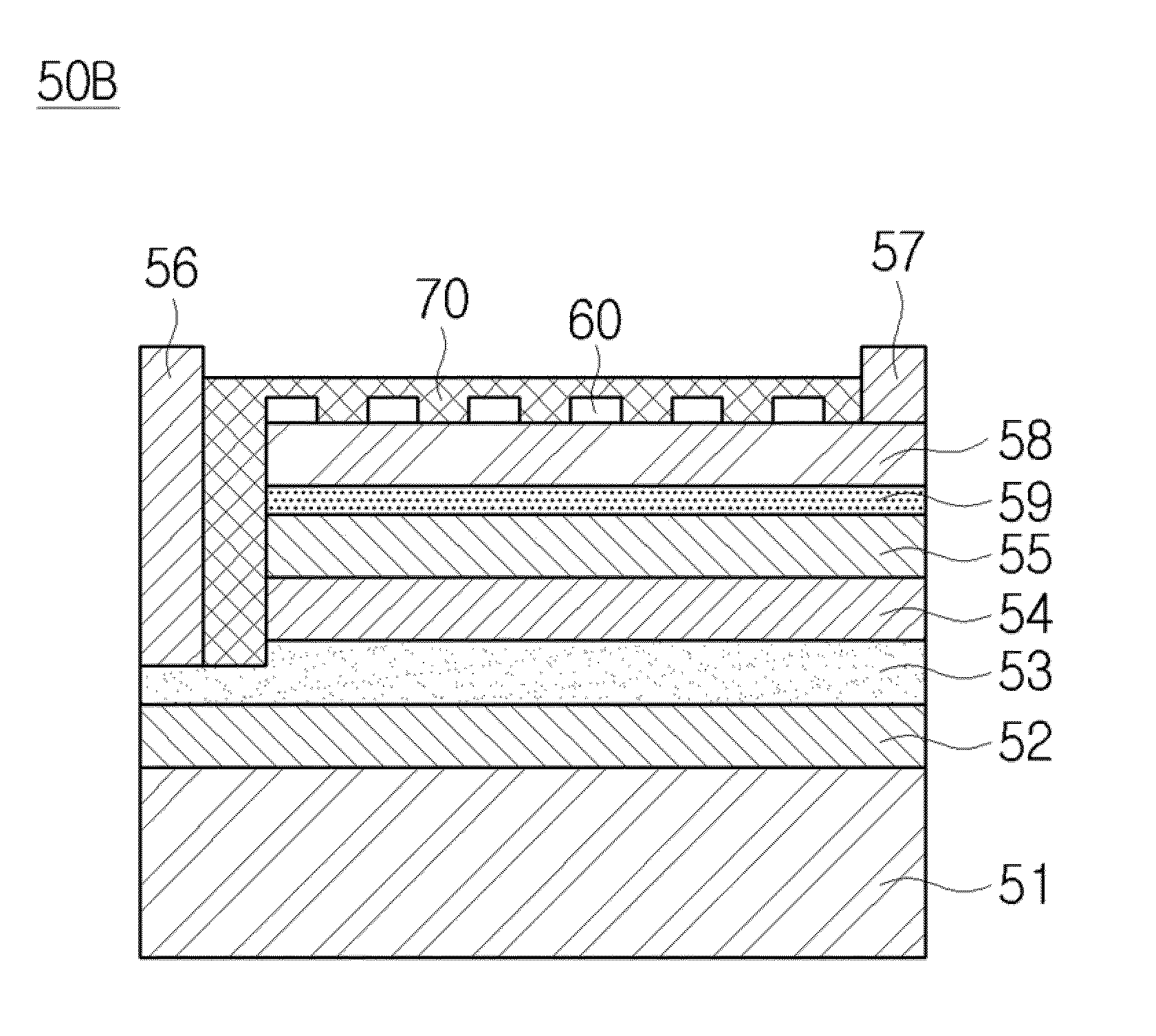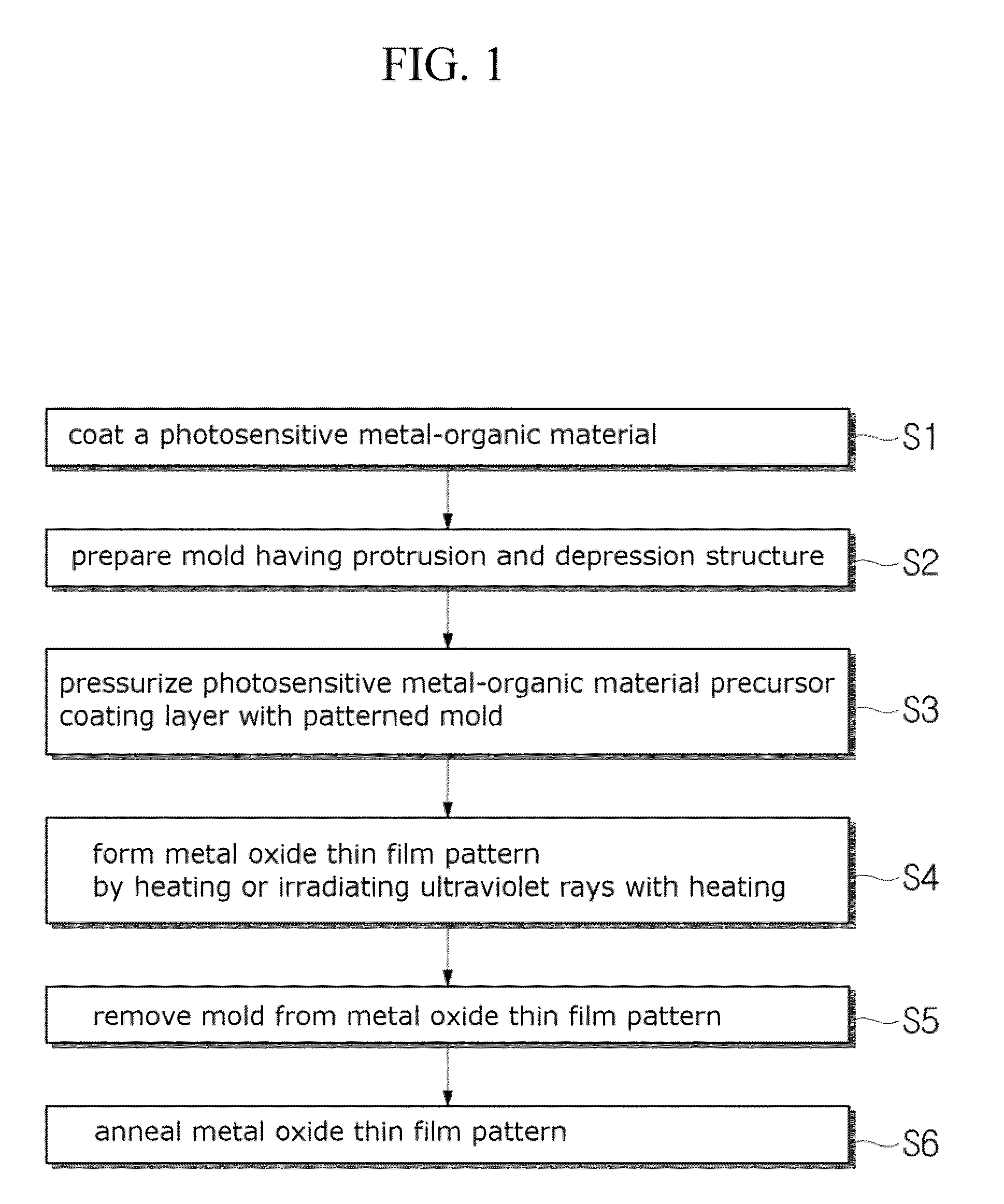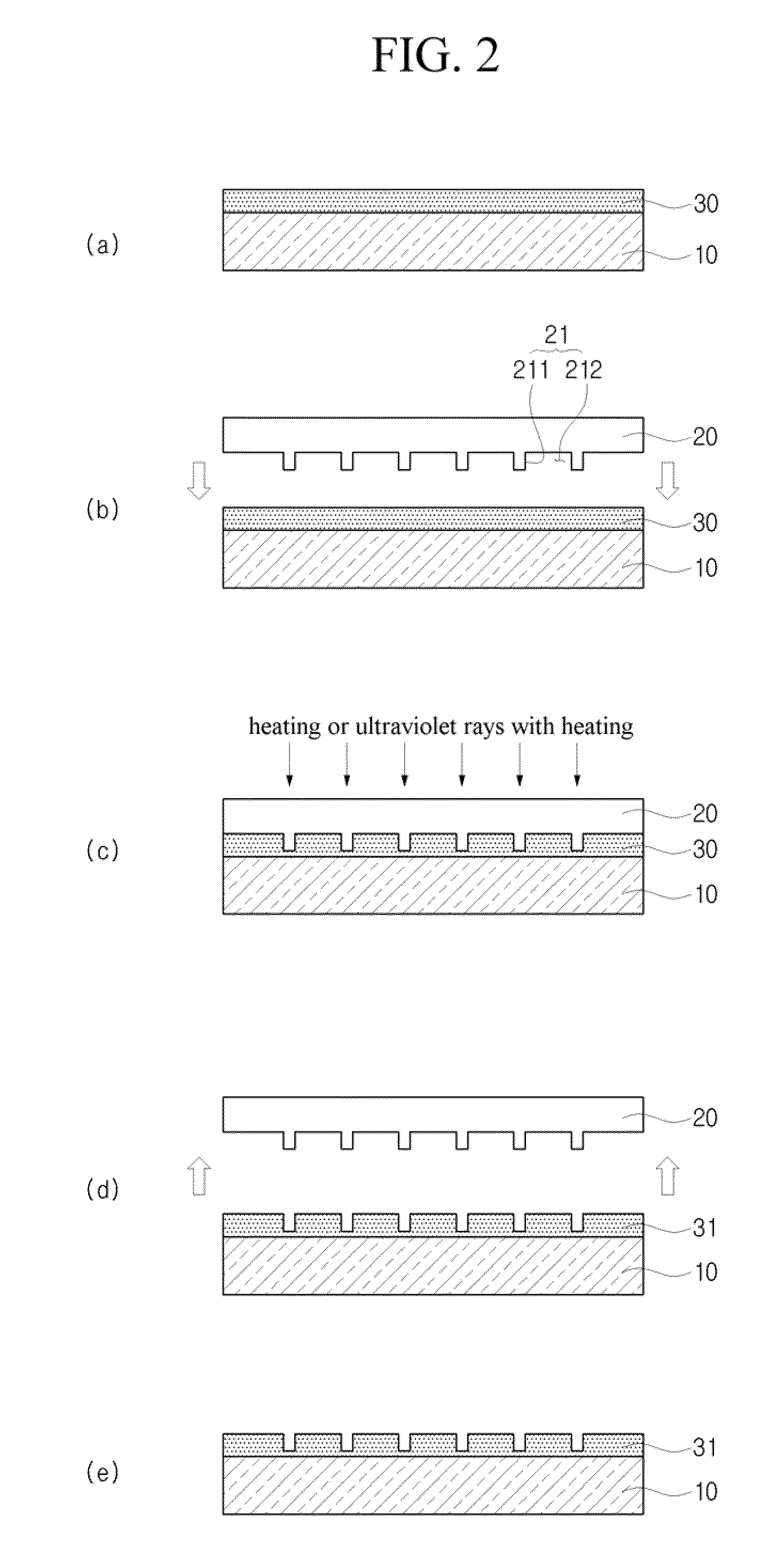Patterning Method of Metal Oxide Thin Film Using Nanoimprinting, and Manufacturing Method of Light Emitting Diode
- Summary
- Abstract
- Description
- Claims
- Application Information
AI Technical Summary
Benefits of technology
Problems solved by technology
Method used
Image
Examples
example 1
[0120]In order to compose the photosensitive metal-organic material precursor solution of titanium (Ti), 1.0000 g of a Ti(VI)(n-butoxide)2(2-ethylhexanoate)2 composition and 5.000 g of hexanes (Aldrich Colo., U.S.A.) are injected and mixed and agitated for 24 hours, thereby preparing a TiO2 sol of 0.27 molarity.
[0121]Herein, in order to compose Ti(VI)(n-butoxide)2(2-ethylhexanoate)2, 10.5266 g of Ti(VI)(n-butoxide)4 (Aldrich Colo., U.S.A.), 8.7400 g of 2-ethylhexanoic acid (Aldrich Colo., U.S.A.), and 15.000 g of hexanes are put in a round flask and evaporated and condensed by a rotary evaporator for 72 hours, thereby composing the Ti(VI)(n-butoxide)2(2-ethylhexanoate)2.
[0122]The photosensitive metal-organic material precursor solution of the composed titanium is spin-coated on one side of the upper end of the silicon substrate under a condition of 3000 rpm, and then the mold, in which a pattern in a pillar or line shape is formed, is pressed.
[0123]Ultraviolet rays were irradiated f...
example 2
[0126]In order to compose the photosensitive metal-organic material precursor solution of tin (Sn), 1.0000 g of Sn(II)2-ethylhexanoate (Alfa Aesar Colo., U.S.A.) and 6.000 g of hexanes (Aldrich Colo., U.S.A.) are injected and mixed and agitated for 24 hours, thereby preparing a SnO2 sol of 0.21 molarity.
[0127]The photosensitive metal-organic material precursor solution of the composed tin (Sn) is spin-coated on one side of the upper end of the silicon substrate under a condition of 3000 rpm, and then the mold, in which the pattern in a pillar shape is formed, is pressed.
[0128]FIG. 10(a) shows a pattern formed by irradiating ultraviolet rays for 30 minutes, and FIG. 10(b) shows a pattern formed by heating for 7 minutes at a to temperature of 150°. Thereafter, the mold is released to form the SnO2 thin film pattern.
[0129]As shown in FIG. 10, it is confirmed that the SnO2thin film patterned by the ultraviolet or thermal nanoimprint process is formed by the nanoimprint process using the...
example 3
[0130]In order to compose the photosensitive metal-organic material precursor solution of various tins (Sn), 1.0000 g of Sn(II)2-ethylhexanoate (Alfa Aesar Colo., U.S.A.) and 6.000 g of MIBK(4-methyl-2-pentanone) (Aldrich Colo., U.S.A.) are injected and mixed and agitated for 24 hours, thereby preparing a SnO2(II) sol of 0.25 molarity.
[0131]The photosensitive metal-organic material precursor solution (II) of the composed tin (Sn) is spin-coated on one side of the upper end of the silicon substrate under a condition of 3000 rpm, and then the mold, in which the pattern in a pillar shape is formed, is pressed.
[0132]FIG. 11(a) shows a pattern formed by irradiating ultraviolet rays for 30 minutes, and FIG. 11(b) shows a pattern formed by heating for 7 minutes at a temperature of 150°. Thereafter, the mold is released to form the SnO2 thin film pattern.
[0133]As shown in FIG. 11, it is confirmed that the SnO2 thin film patterned is formed by the ultraviolet or thermal nanoimprint process u...
PUM
| Property | Measurement | Unit |
|---|---|---|
| Temperature | aaaaa | aaaaa |
| Time | aaaaa | aaaaa |
| Time | aaaaa | aaaaa |
Abstract
Description
Claims
Application Information
 Login to View More
Login to View More - R&D
- Intellectual Property
- Life Sciences
- Materials
- Tech Scout
- Unparalleled Data Quality
- Higher Quality Content
- 60% Fewer Hallucinations
Browse by: Latest US Patents, China's latest patents, Technical Efficacy Thesaurus, Application Domain, Technology Topic, Popular Technical Reports.
© 2025 PatSnap. All rights reserved.Legal|Privacy policy|Modern Slavery Act Transparency Statement|Sitemap|About US| Contact US: help@patsnap.com



